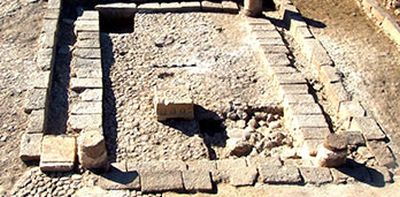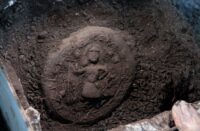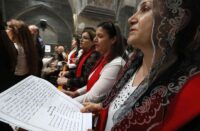
Mary Magdalene may not have been a poor prostitute on the street but rather a woman of wealth and influence, suggest scholars in the light of research and archaeological discoveries in her hometown, first century Magdala.
These finds give insight into the environment and common life during Jesus´ period, but also reveal interesting facts that give context to this woman’s life.
According to the Christian scriptures, Mary Magdalene was delivered from seven demons, accompanied Jesus during some of his years in public ministry and to the foot of the cross, and was the first eyewitness of the resurrection of Jesus.
Up until the mid-20th century, Mary Magdalene was traditionally portrayed as a prostitute. Opinions and thoughts have merged with fiction, traditions, and misinterpretations. But what if she wasn’t what the general populace had been thinking about her throughout centuries?
Among the archaeological finds at the site of Magdala, an observant religious presence can be seen at the town. Magdala houses the only first century synagogue around the lake, a place of learning the Torah dated to Jesus´ times period, a stone with the Second Temple embodied, remains of a thriving market place where fish was salted (honouring its Greek name: Magdala-Tarichaea), Jewish ritual baths, housing areas and part of the ancient harbor.
Rabbinic literature, in fact, mentions a synagogue and a famous bet midrash (learning place), even naming a scribe and Rabbis Isaac and Judah. The religious environment may have influenced Mary Magdalene and perhaps she rebelled against the strictness of the law enforcing leadership.
On the other hand, influential and wealthy people during the first century were called by their hometown names, which could be the case of Mary Magdalene [1]. This may have confirmed she was an influential and wealthy woman.
Other scholars have identified her as an adult widow who may have inherited her wealth from her husband and allowed her to support Jesus’ ministry with her means.[2]
Luke 8:3 also alludes to her wealth, naming her first among other woman who cared for Jesus out of their own sustenance (Luke 8:3).
One of the women in her company was Johanna, the wife of Herod’s steward, and was possibly a woman involved in the court life. Is it possible that Mary Magdalene was among these women?
[2] Biblical scholar Dr. Tina Wray, Professor of Religious and Theological Studies at Salve Regina University in Newport, Rhode Island.







